Authors:
ABSTRACT
Aim
This was to evaluate the efficacy of a Titanium Trauma Splint TTS by comparing it with three other devices
commonly used in the care of dental trauma, a Resin Splint RS, Button-Bracket Splint BS and a Wire-
Composite Splint WCS.
Methods
The four types of splints were applied on experimental dental models, including in the
splints the teeth from canine to canine of each maxilla. Two load-tests for each device were applied with the dental model inclined to 45
or less, and increasing forces were applied to the incisal edges from 0N to 50N, in the first test, and from 0N to 100N in the
second. At the same time the displacement involved of the splinted teeth was assessed and then the ratio between the two measured
sizes was graphically represented.
Results
In the level tests the displacements of the splinted teeth caused by the force of 80N
were: 0.39 mm for the BS, 0.37 mm for the TTS, 0.35 mm for the WCS and 0.30 mm for the RS. In the inclined tests, the splints under
the effect of 40N, showed displacements as: 1.65 mm RS, 1.83 mm BS, 1.89 mm TTS and 2.16 mm WCS.
Conclusion
With the
exception of RS as to rigidity, the other three splints were practically the same in response. Considering other characteristics, the TTS
proved to be a promising device for the treatment of dental traumas.
PLUMX METRICS
Publication date:
Keywords:
Issue:
Vol.6 – n.4/2005
Page:
Publisher:
Cite:
Harvard: E. Stellini, S. Avesani, S. Mazzoleni, L. Favero (2005) "Laboratory comparison of a titanium trauma splint with three conventional ones for the treatment of dental trauma", European Journal of Paediatric Dentistry, 6(4), pp191-196. doi:
Copyright (c) 2021 Ariesdue

This work is licensed under a Creative Commons Attribution-NonCommercial 4.0 International License.
